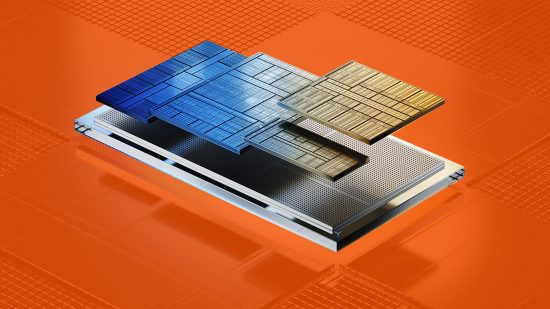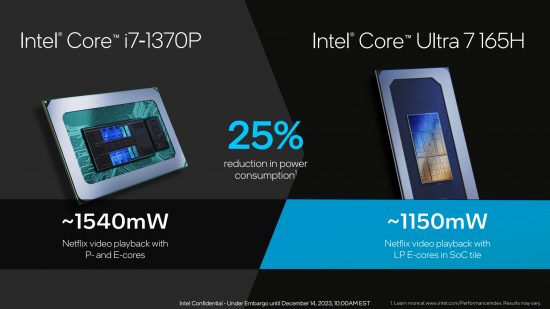It’s been a protracted process but Intel has finally officially unveiled its new Intel Core Ultra CPUs powered by its new Intel Meteor Lake architecture. Along with a new and complex hybrid chip design, the new processors promise to deliver a big boost in onboard graphics performance. They also add in dedicated AI cores and new extra low power cores to ensure laptops and other mobile devices can do more for longer when running on battery power.
While packed with new technology, these CPUs won’t be candidates for our best CPU for gaming guide, as they’re currently for laptop and mobile use only – you can’t buy them as a standalone upgrade. Indeed, Intel is completely skipping adding a range of desktop CPUs using the Intel Meteor Lake architecture. Instead, it will be in late 2024 that we expect to see a brand new Intel Arrow Lake architecture powering a brand-new range of desktop CPUs – in the meantime you’ll have to make do with the fast but power-hungry Intel 14th-gen chips, such as the Intel Core i5-14600K.
The new Intel Meteor Lake chips also mark the debut of Intel’s new naming scheme, whereby the ‘i’ that used to be in Intel CPU names has gone. So, instead of a name such as Intel Core i9 14900K, under the new scheme this chip would be called the Intel Core Ultra 9 14900K. Hardly a revolution, but something to be aware of.
The biggest change for most gamers looking to get the most fun from their laptop is that Intel’s integrated Arc graphics has seen a big boost in performance. In Intel’s provided tests, performance in the game Ghostrunner 2 is shown rising from 26fps using a current-gen Intel Core i7 1370P chip to 62fps using a new Intel Core Ultra 165H chip.
Intel also highlights how this performance can be extended further to 82fps using XeSS (the company’s upscaling technology equivalent to AMD FSR and Nvidia DLSS) – making for that claimed 3x performance increase. However, XeSS is already available on 13th-gen mobile chips and AMD’s competing products can also take advantage of similar upscaling technologies to claim a performance increase, so it’s more than a bit of a stretch to claim the real-world performance increase is that high.
Still, 26fps to 62fps is a more than doubling in performance, so it’s still impressive. That said, Intel’s own graphs show these numbers only just bring Intel up to just past parity with AMD’s competing solutions, so it’s not a slam dunk for Intel.
Also, a big change with the new chips is the introduction of new low-power AI cores – dubbed NPU cores – that allow these chips to accelerate AI workloads while only sipping power. These will work alongside the CPU and GPU to provide a triple-threat of ways for AI workloads to be accelerated – CPU for low-latency, GPU for heavy workloads, and NPU for low-power background tasks.
Accompanying these changes is a 25% reduction in overall power consumption compared to 13th-gen chips, which in part comes about due to a change in manufacturing process from the larger Intel 7 (14nm) to the smaller Intel 4 (7nm) process.
The full lineup of Intel Core Ultra chips launching today is large, but there are two main types, with the H chips including higher-power Intel Arc graphics and the U models including lower-tier Intel graphics. The U models also have fewer cores and are generally focussed on thin and light laptops.
The Intel Core Ultra lineup will be arriving in a host of new laptops, with the likes of Acer, Asus, Dell, MSI, and Razer all expected to announce new products featuring the chips at the CES 2024 trade show in January 2024. We’ll be reporting from the show to get hands-on with all those products and more.
If all this talk of mobile gaming isn’t for you, though, check out our best gaming CPU guide for our current top choice for desktop CPUs or check out what early Intel Arrow Lake leaks to see what Intel’s next-generation processors have in store.




